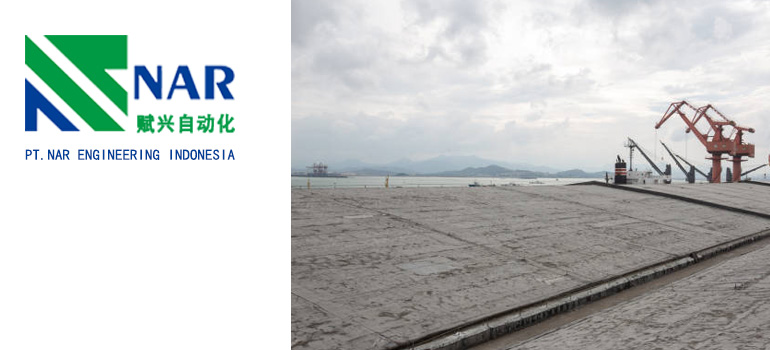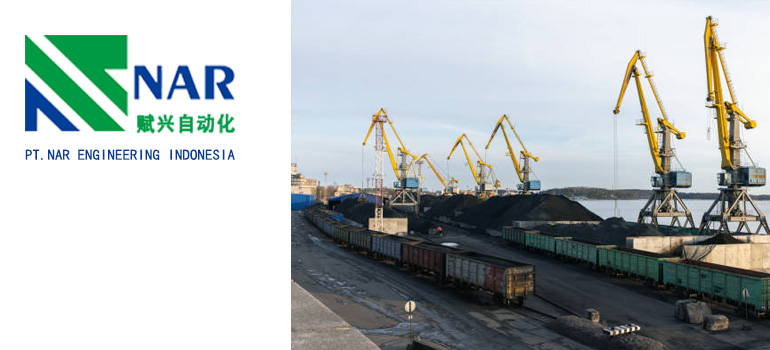Summary:
Choosing the Right Mobile Loading Machine for Your Business: A Comprehensive Guide
What is a Mobile Loading Machine
Factors to Consider When Choosing a Mobile Loading Machine
Mobile Loading Machine vs. Other Equipment: Pros and Cons
How to Maintain Your Mobile Loading Machine for Longevity
Mobile loading machines are pivotal in various industries, offering a versatile solution for handling and transporting materials. To make an informed decision when selecting the right equipment for your business, it’s essential to understand what a mobile loading machine is and its core components.
What is a Mobile Loading Machine?
A mobile loading machine is a type of heavy equipment designed to move and load materials efficiently across different sites. Unlike stationary equipment, mobile loaders are built with mobility in mind, featuring wheels or tracks that allow them to navigate diverse terrains with ease. These machines can handle various tasks, from loading bulk materials onto trucks to moving supplies around a construction site. Their flexibility makes them a valuable asset for operations that require movement and adaptability.
H3: Key Components and Features
To understand the capabilities of a mobile loading machine, it’s important to familiarize yourself with its main components:
- Loader Arms: These are the primary tools for scooping and lifting materials. They come in various configurations, such as telescopic or articulated, to suit different needs.
- Bucket or Fork Attachment: The bucket is used for bulk materials, while forks can handle pallets or other objects. Some machines offer interchangeable attachments to increase versatility.
- Hydraulic System: This system powers the loader arms and attachments, providing the force needed to lift and move materials.
- Operator Cabin: Equipped with controls and safety features, the cabin ensures that the operator can maneuver the machine safely and efficiently.
Each component plays a crucial role in the machine’s performance and efficiency, so understanding them helps in evaluating which model will best meet your needs.
Different Types of Mobile Loading Machines
There are several types of mobile loading machines, each designed for specific tasks:
- Wheel Loaders: These are the most common type, known for their robust performance and versatility. They are ideal for construction and mining applications, where they can handle a range of materials from gravel to dirt.
- Tracked Loaders: With their crawler tracks, these loaders offer enhanced stability and traction, making them suitable for rough or uneven terrains. They are often used in forestry and excavation work.
- Telehandlers: These machines combine the features of a loader and a crane, offering extended reach and lifting capabilities. They are commonly used in agriculture and construction for tasks that require height and precision.
Understanding the different types helps you select the one that aligns with your specific operational needs.
Factors to Consider When Choosing a Mobile Loading Machine

Selecting the right mobile loading machine is crucial as it impacts both your operational efficiency and overall cost-effectiveness. Several key factors should be considered to ensure that the equipment you choose meets your specific needs and provides long-term value.
Assessing Your Business Needs
Before selecting a mobile loading machine, it’s essential to assess your business needs. This involves understanding the type of materials you handle and the working environment:
- Material Type: Are you loading bulk materials (such as sand or gravel) or fixed items (like pallets or containers)? Different types of loaders come with various attachments and features tailored for specific material handling requirements.
- Work Environment: Is your worksite flat or uneven? If you operate in muddy or rough terrain, you may need a loader with better traction and stability.
- Frequency of Use: If the loader will be used frequently, consider opting for a model with higher durability and performance to withstand continuous operation.
Understanding these requirements helps in identifying the loader that best fits your operational conditions.
Comparing Capacity and Performance
The capacity and performance of a mobile loading machine are crucial factors that affect its efficiency and productivity:
- Loading Capacity: Consider the loader’s maximum load capacity, as this is essential for improving work efficiency. Ensure the machine can handle the maximum weight you will be working with.
- Engine Power: Higher engine power typically translates to better performance and faster operation speeds. Balance power with fuel efficiency to maintain good economic performance even under heavy loads.
- Working Range and Height: Depending on the type of materials and the workspace, select a loader with the appropriate working range and lifting height to meet your operational needs.
Comparing these performance metrics helps you choose the most suitable loader for your business.
Evaluating Maintenance and Operating Costs
Understanding the maintenance and operating costs of a mobile loading machine is crucial for ensuring long-term economic efficiency:
- Maintenance Costs: Review the maintenance requirements, including regular servicing, part replacements, and the availability of compatible parts.
- Operating Costs: This includes fuel consumption, lubrication, and other consumables. While higher-efficiency machines might have a higher upfront cost, they can offer savings in the long run due to lower operating costs.
- Warranty and Service Support: Opt for a brand that offers good warranty terms and service support to reduce additional costs and downtime due to equipment failures.
Evaluating these costs ensures that you maintain lower operational expenses and repair costs after purchasing the loader.
Mobile Loading Machine vs. Other Equipment: Pros and Cons
When choosing equipment for handling and moving materials, it’s essential to compare mobile loading machines with other types of equipment to determine which best fits your needs. Each type of equipment has its strengths and weaknesses, and understanding these can help you make an informed decision.
Advantages of Mobile Loading Machines
Mobile loading machines offer several benefits that make them a popular choice in various industries:
Versatility: Mobile loading machines are highly versatile. They can be used for a wide range of tasks, including loading bulk materials, moving pallets, and even performing some lifting operations. Their ability to switch between different attachments (like buckets and forks) enhances their functionality.
Mobility: As the name suggests, mobile loading machines are designed to move. They can travel across different terrains and work sites, which is ideal for dynamic environments where materials need to be transported from one location to another. This mobility reduces the need for additional equipment to move materials.
Efficiency: These machines are often equipped with powerful engines and hydraulic systems that enhance their efficiency and speed in handling materials. This can significantly improve productivity and reduce the time required for tasks compared to manual or less advanced equipment.
Disadvantages and Limitations
Despite their advantages, mobile loading machines do have some limitations:
Initial Cost: Mobile loading machines can be expensive to purchase or lease. The initial investment might be higher than other types of equipment, which can be a significant consideration for businesses with tight budgets.
Maintenance and Repair Costs: The complexity of mobile loading machines, with their hydraulic systems and numerous moving parts, can lead to higher maintenance and repair costs. Regular servicing is required to keep the equipment in good working condition, and repairs can be costly if problems arise.
Fuel Consumption: Mobile loading machines, particularly larger models, can consume a lot of fuel, which adds to operating costs. This can be a drawback for businesses looking to minimize expenses or those focused on sustainability.
How Mobile Loading Machines Compare to Fixed Equipment
When comparing mobile loading machines to fixed equipment, such as stationary loaders or forklifts, several factors come into play:
Fixed Equipment (e.g., Stationary Loaders):
Advantages: Fixed equipment is often more durable and can handle heavy loads more effectively. It may also be less expensive to maintain due to fewer moving parts and a simpler design. Additionally, stationary loaders can be more fuel-efficient since they operate in a single location.
Disadvantages: Fixed equipment lacks the mobility of mobile loaders, limiting its use to specific areas. This can reduce flexibility and require additional machinery to move materials between different locations within a site.
Forklifts:
Advantages: Forklifts are highly effective for moving and stacking pallets and other items in warehouses and storage areas. They are typically more maneuverable in tight spaces and are usually less expensive than mobile loading machines.
Disadvantages: Forklifts generally have lower lifting capacities compared to mobile loading machines. They are also less suitable for handling bulk materials or operating on rough terrain, which limits their versatility.
Comparing these types of equipment helps you understand the trade-offs involved and select the option that best meets your operational requirements and budget.
How to Maintain Your Mobile Loading Machine for Longevity
Maintaining your mobile loading machine properly is essential to ensure its longevity and optimal performance. Regular maintenance not only helps in avoiding unexpected breakdowns but also maximizes the efficiency of the equipment and reduces overall operating costs. Here’s a comprehensive guide to keeping your mobile loading machine in top condition:
Routine Maintenance Checklist
Implementing a routine maintenance schedule is crucial for the longevity of your mobile loading machine. Here’s a checklist to help you stay on top of essential tasks:
Daily Inspections: Before each shift, perform a quick visual inspection of the machine. Check for any visible leaks, unusual noises, or obvious damage. Ensure that all safety devices are functioning correctly.
Fluid Levels: Regularly check and top up essential fluids, including engine oil, hydraulic fluid, and coolant. Low fluid levels can lead to overheating and mechanical issues.
Filter Replacements: Replace air, oil, and hydraulic filters according to the manufacturer’s recommendations. Clean filters help maintain proper engine function and hydraulic performance.
Troubleshooting Common Issues
Identifying and addressing issues early can prevent more serious problems down the line. Here are some common issues and tips for troubleshooting:
Engine Problems: If the engine is running rough or has difficulty starting, check the fuel system, air filters, and spark plugs. Ensure that the fuel is clean and that there are no blockages in the fuel lines.
Hydraulic System Issues: Common symptoms of hydraulic problems include slow response times or erratic movements. Check for leaks in hydraulic hoses and connections, and ensure the hydraulic fluid is at the correct level.
Brake and Steering Concerns: If you notice reduced braking efficiency or steering difficulties, inspect the brake pads and fluid levels. Ensure that the steering mechanism is well-lubricated and free from obstructions.
Tips for Extending Equipment Life
In addition to routine maintenance and troubleshooting, there are several best practices you can follow to extend the life of your mobile loading machine:
Follow Manufacturer Guidelines: Adhere to the manufacturer’s maintenance schedule and use recommended parts and fluids. The manufacturer’s guidelines are designed to optimize performance and prevent issues.
Keep the Equipment Clean: Regularly clean the machine to prevent the buildup of dirt and debris. A clean machine is less likely to suffer from overheating or mechanical blockages.
Proper Usage: Train operators to use the machine correctly and avoid overloading or improper handling. Proper operation helps reduce wear and tear on the equipment.
Store Properly: When not in use, store the mobile loading machine in a sheltered environment to protect it from harsh weather conditions. Use covers or tarps if necessary to shield it from rain, snow, or direct sunlight.
Regular Professional Inspections: Schedule periodic inspections by a professional technician to catch any potential issues that may not be apparent during routine checks. These inspections can identify problems before they become significant and costly.

